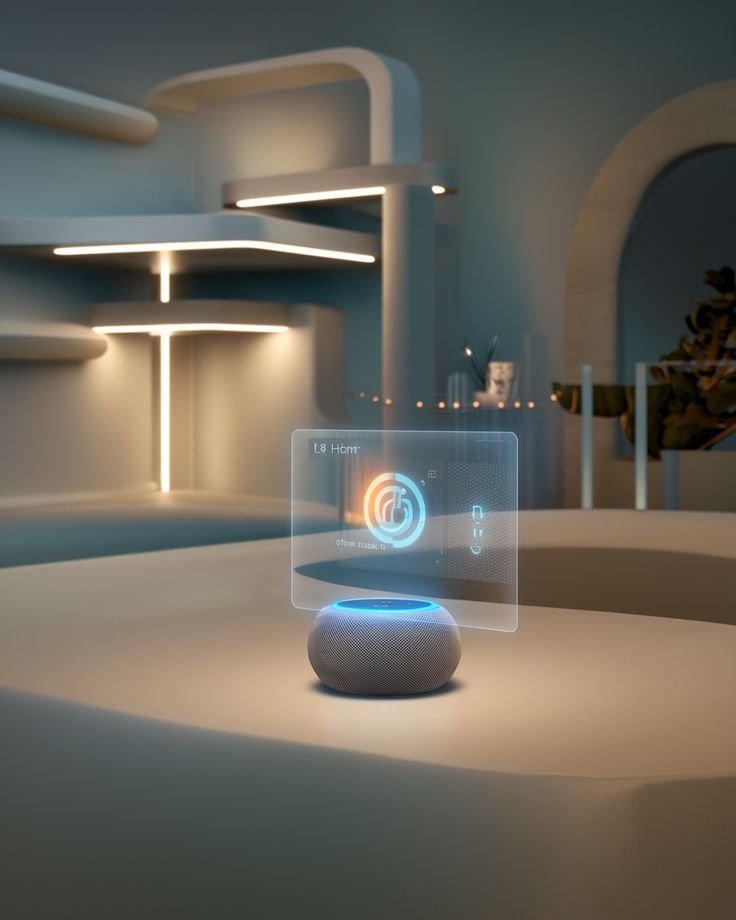Smart home technology has seen exponential growth in recent years, transforming everyday living. By 2025, innovation in this field has elevated convenience, efficiency, and security to unprecedented levels. From AI-powered systems to energy-saving advancements, the smart home trend is redefining modern households. Here’s a comprehensive look at the groundbreaking devices and trends shaping the future of smart homes.
The Role of Artificial Intelligence in Smart Homes
AI has become the backbone of many smart home devices. No longer limited to voice assistants performing basic tasks, artificial intelligence in 2025 enables systems to learn, anticipate, and adapt to user behaviors seamlessly.
Autonomous Smart Assistants
Advanced virtual assistants are now equipped with predictive learning. For example, if you consistently adjust your thermostat at a certain time, the AI automatically makes those changes without prompting. Tools like Google Nest Hub and Amazon’s Alexa are evolving into sophisticated centralized hubs capable of orchestrating entire smart ecosystems.
AI-Driven Personalization
Through sophisticated data analysis, AI can deliver ultra-personalized experiences. Smart lighting systems like Philips Hue adjust brightness and color based on your mood and activity, measured through wearable devices or smartphones.
Context Sensitive Automation
For instance, AI-infused refrigerators such as LG’s InstaView now scan shelves to track expiration dates while suggesting recipe ideas. This level of context-aware functionality is simplifying daily routines dramatically.
Focus on Energy Efficiency
Sustainability drives much of the progress in smart home development. With energy-saving technology becoming a priority, consumers are finding ways to significantly reduce utility costs while minimizing environmental impact.
Smart Energy Management Systems
Energy-monitoring platforms like Sense Energy Monitor enable real-time tracking of power consumption and suggest ways to optimize usage. These systems can work in tandem with smart outlets and appliances, ensuring minimal standby power is wasted.
Solar Integration
2025 has also made strides in brighter, more durable solar panels specifically designed for urban environments. These integrate seamlessly with IoT devices to power entire homes sustainably. Tesla’s Powerwall, for instance, is a key player in the rise of self-sufficient energy systems.
Smart HVAC Systems
Next-gen heating and cooling units like Ecobee Smart Thermostats utilize occupancy sensors and weather forecasting. This minimizes energy waste while ensuring consistent comfort levels.
Cutting-Edge Smart Security
Concerns about home safety have propelled advancements in security technology. Today’s systems emphasize proactive protection, ensuring risks are detected and mitigated before becoming threats.
Advanced Facial Recognition Cameras
Unlike earlier versions, the security cameras of 2025, such as those from Arlo, use enhanced facial recognition to differentiate between family members, guests, and intruders. Integrated AI ensures automatic alerts are sent for unauthorized activities.
Biometric Entry Systems
Biometric technology has replaced traditional locks and keycards. Fingerprint or retina-based entry locks, like those from Ultraloq, provide unmatched security while allowing homeowners to manage access from anywhere.
Proactive Protection via IoT
Devices like Ring Alarm Pro combine IoT technology with AI to actively monitor the home. This includes motion sensors, fire alarms, and water leak detectors all functioning together to deliver a cohesive safety net.
Seamless Integration with Smart Ecosystems
2025 smart homes emphasize integration, allowing diverse devices to work harmoniously within a single ecosystem.
Unified Interfaces
Rather than juggling multiple apps, centralized platforms like Samsung SmartThings unify device interaction. Homeowners can lock doors, adjust lights, and manage appliances from a single application, streamlining control.
Cross-Compatibility Enhancements
Device manufacturers are prioritizing interoperability. With Matter, a new universal IoT protocol, smart home gadgets from different brands communicate seamlessly, eliminating long-standing compatibility issues.
Voice-Activated Control
Voice assistants have grown exceedingly efficient with better contextual awareness. They now act as a bridge between varied devices, ensuring smooth coordination within expansive home networks.
Evolution in Entertainment and Comfort
Modern smart homes offer unparalleled comfort and entertainment options with advancements in technology designed to enhance the homeowner’s leisure experience.
Immersive Home Theaters
Projector systems, such as those from Epson, offer cinema-quality visuals, while 3D soundbars and subwoofers create a dynamic audio experience. Smart TVs now come AI-optimized to recommend tailored content with the smoothest streaming options available.
Adaptive Furniture
Furniture equipped with connectivity, like Movisi’s smart modular designs, enables multifunctionality. Desks smartly morph into lounging surfaces based on user commands, adding convenience to confined spaces.
Intelligent Wellness Devices
Technology also caters to mental and physical well-being. Smart beds from Sleep Number monitor sleeping patterns and adjust firmness for optimal rest. Devices like Peloton’s smart exercise equipment incorporate AI coaching to transform homes into fitness hubs.
Health-Centric Innovations
The pandemic years fast-tracked health integrations into smart living, which now continue to be a primary focus for developers in 2025.
Intelligent Air Purifiers
Air quality awareness has grown exponentially, leading to devices like Dyson’s Purifier Formaldehyde that continuously analyze and adjust home air composition for cleanliness and safety.
Smart Medical Assistance
Wearables, such as Apple’s latest Apple Watch, level up health monitoring by syncing with home hubs. This allows emergency alerts to be sent straight from biometric data analysis. For assisted living scenarios, these monitors can notify caregivers immediately in case of fluctuations in vitals.
Touchless Technology
To prioritize hygiene, touchless gadgets are increasingly installed in kitchens and bathrooms. Motion-sensing faucets and voice-controlled appliances reduce physical interaction with high-contact surfaces.
The Road Ahead for Smart Homes
The future of smart homes revolves around creating seamless, sustainable, and highly personalized living environments. With advancements in AI, IoT, and eco-friendly technologies, the homes of 2025 prioritize efficiency, security, and user experience like never before. Compatibility between brands and greater access to user-friendly interfaces ensures these devices aren’t just luxuries—they’re becoming essentials for modern living.
The smart home evolution continues, making life easier, safer, and more efficient. Homeowners willing to invest in these advancements stand to reap long-term financial and convenience benefits, nurturing a lifestyle perfectly attuned to the demands of the digital age.

